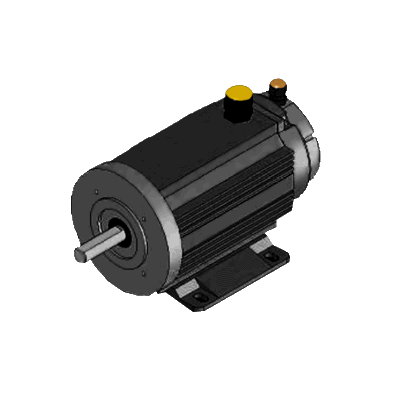Electric Motor Generator: Difference between revisions
| Line 9: | Line 9: | ||
==Overview== | ==Overview== | ||
The '''Electric Motor''' serves the function of converting electrical energy into mechanical energy and vice-versa. | The '''Electric Motor''' serves the function of converting electrical energy into mechanical energy and vice-versa. | ||
{{Video}} | |||
==Detailed Description== | ==Detailed Description== | ||
Revision as of 18:27, 20 September 2011
| Electric Motor Generator | ||
|---|---|---|
| Home | Research & Development | Bill of Materials | Manufacturing Instructions | User's Manual | User Reviews | 
| |
see also: Hydraulic Motor
Overview
The Electric Motor serves the function of converting electrical energy into mechanical energy and vice-versa.
Detailed Description
Most electric motors operate through the interaction of magnetic fields and current-carrying conductors to generate force. The reverse process, producing electrical energy from mechanical energy, is done by generators such as an alternator or a dynamo; some electric motors can also be used as generators.
The ideal GVCS motor is one that meets OSE Spec for appropriate scale and ease of fabrication.
While many heavy-duty GVCS technologies are powered by Hydraulic Motors, many of the smaller, more precision actuation is left to Electrical Motors.
Product Ecology
Uses
- Battery
- UPS
- Charge Controller
- 3D Printer - Insulator parts
- Wire Mill - Copper wires
Powers
- 3D Printer
- CNC Circuit Mill
- Lathe - Shaft
- Torch Table
- Laser Cutter
- Industrial Robot
- Welder - Wire feed
- Solar Panel - Tracking
- Multimachine - CNC Components
- Car
Powered by
See Product Ecologies for more information.
Components
- Housing
- Wiring
- Magnets
- Power
- Controller
- Stepper
Status
The Electric Motor Generator is currently in the Research Phase of product design.
See Also
- Stepper Motor
- Appropedia: Comparison of electrical motors - types and applications, 3D models.
- Wikipedia: Electric Motor
- Wikipedia: Electrical Generator
